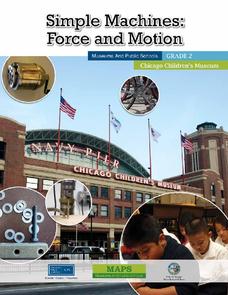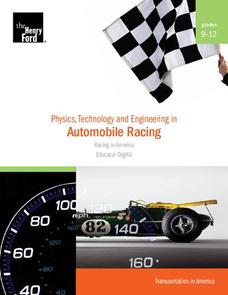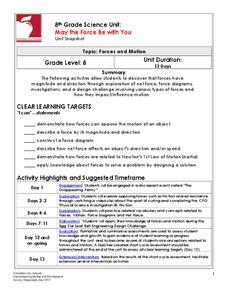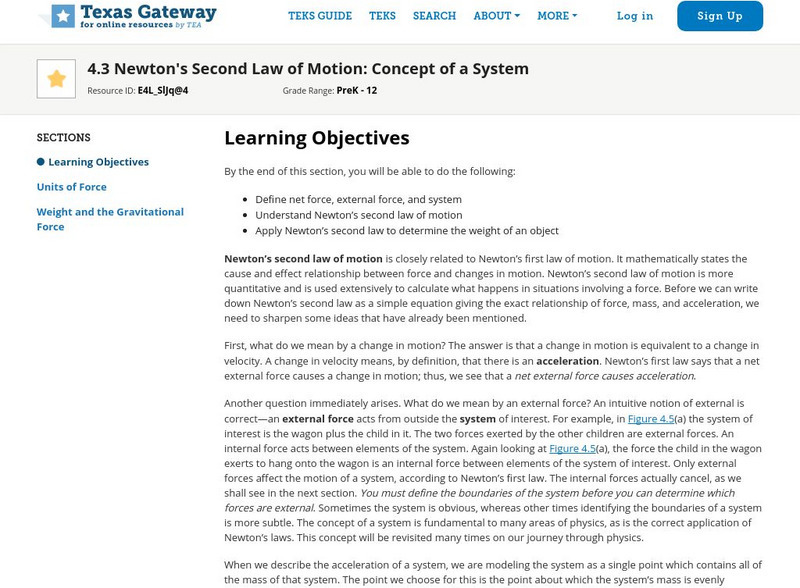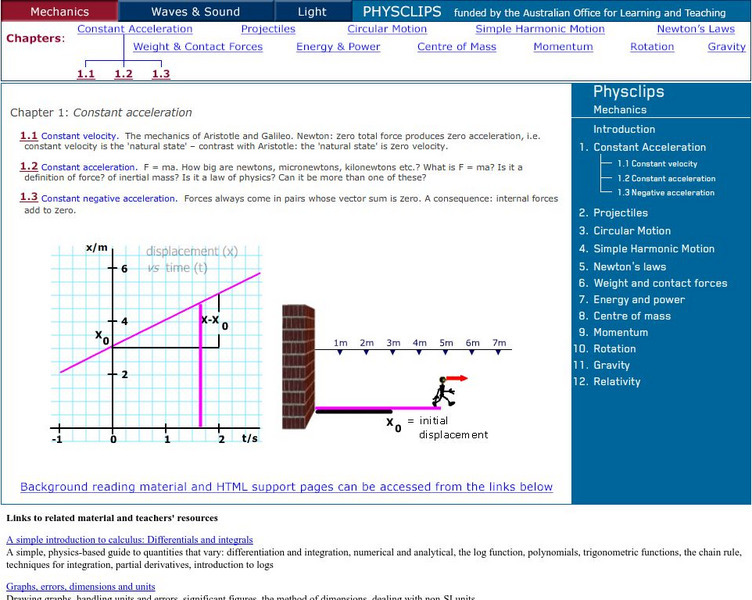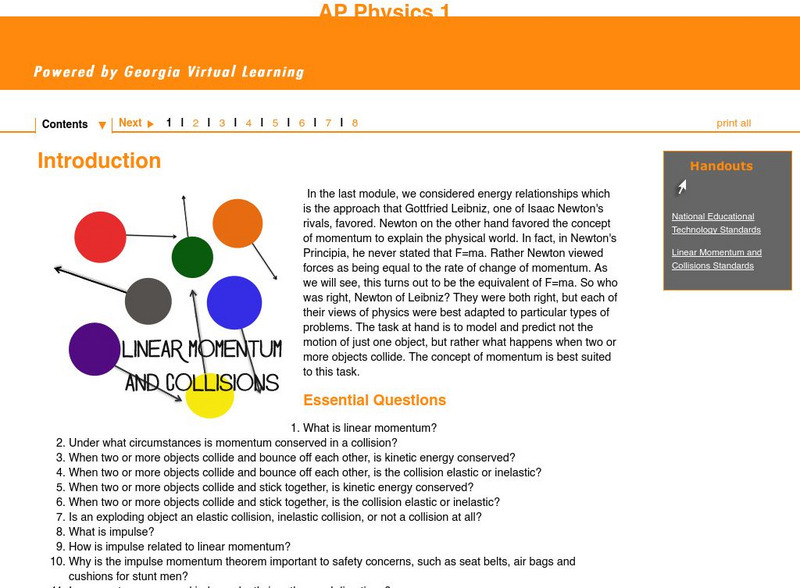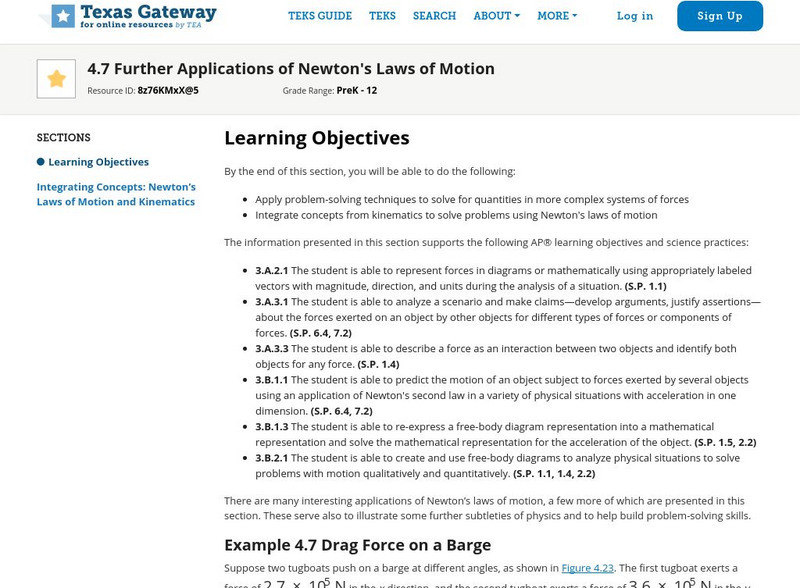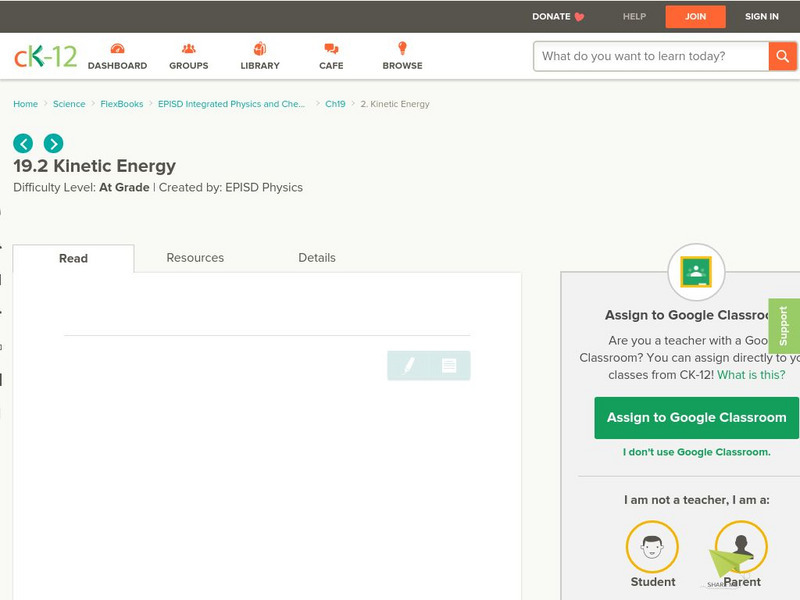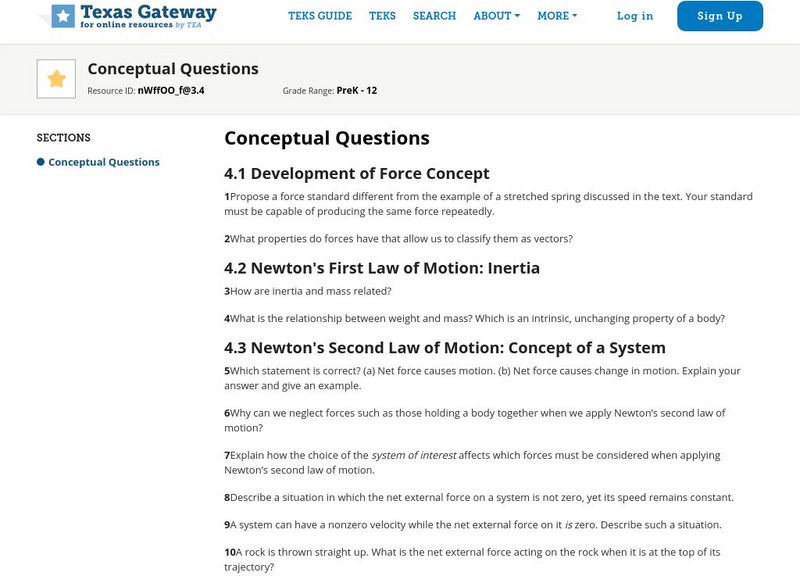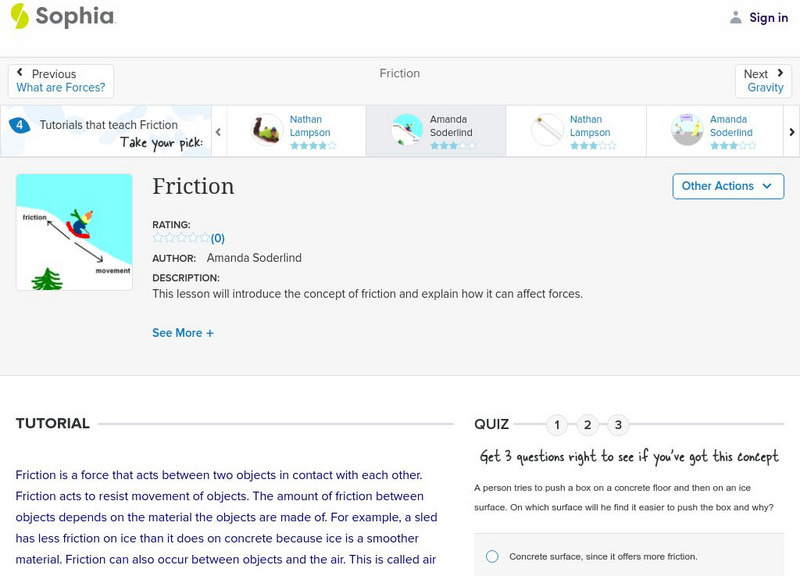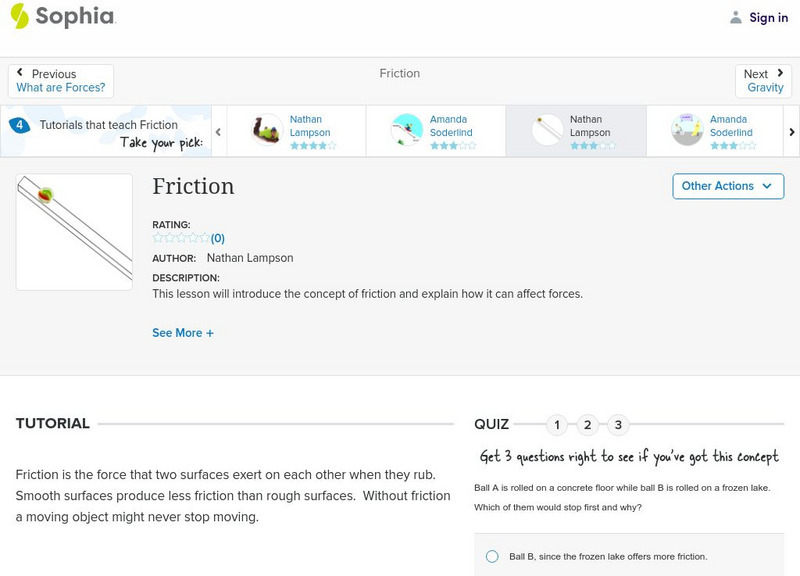Chicago Children's Museum
Simple Machines: Force and Motion
Get things moving with this elementary science unit on simple machines. Through a series of nine lessons including teacher demonstrations, hands-on activities, and science experiments, young scientists learn about forces, motion,...
University of Florida
Understanding Car Crashes: It's Basic Physics!
Make an impact on young physicists with this fun collection of resources. After first watching a video and taking notes on the physics of car crashes, students go on to complete a series of activities that explore the...
Henry Ford Museum
Physics, Technology and Engineering in Automobile Racing
Start your engines! This five-lesson unit introduces physics and Newton's laws through automobile racing. Each lesson includes background information, a student worksheet, and an answer key. There are also culminating...
Curated OER
Materials for Teaching Modern Physics
A must-see for any physics teacher! You will find 217 pages of physics activities and worksheets that cover motion, electricity and magnetism, light, modern and quantum physics, and astronomy. Each activity comes with an answer...
Mathematics Vision Project
Quadratic Equations
Through a variety of physical and theoretical situations, learners are led through the development of some of the deepest concepts in high school mathematics. Complex numbers, the fundamental theorem of algebra and rational exponents...
Mathematics Vision Project
More Functions, More Features
Learners tackle a wide range of intimidating topics in this comprehensive unit that spans piecewise functions, absolute value of functions, and inverse functions (among other topics). Investigative group work alternates with more...
University of Southern California
What Is The Ocean?
Go on a tour of the ocean through the lens of a scientist. Learners read maps of the ocean floor, study tide behavior, examine wave motion, and analyze components of soil. Each lesson incorporates a hands-on component.
Steinhardt Apps
Kinetic Molecular Theory
Building off young chemists' knowledge of the states of matter, kinetic molecular theory is the focus of the unit. Eight days of lessons including multiple demonstrations, one lab experiment, directed instruction, and worksheets,...
Columbus City Schools
May the Force Be with You
You won't have to force your classes to complete these engaging activities! Through exploration, young scientists learn that force has both magnitude and direction. They draw force diagrams, investigate force models, and complete a...
Texas Education Agency
Texas Gateway: 4.3 Newton's Second Law of Motion: Concept of a System
By the end of this section, you will be able to define net force, external force, and system; understand Newton's second law of motion; and apply Newton's second law to determine the weight of an object.
OpenStax
Open Stax: Newton's Second Law of Motion: Concept of a System
In the following interactive students will begin to define net force, external force, and system and understand Newton's second law of motion. They will also apply Newton's second law to determine the weight of an object.
University of New South Wales (Australia)
University of New South Wales: School of Physics: Physclips
Physiclips thoroughly presents mechanics concepts with animations and film clips.
University of New South Wales (Australia)
University of New South Wales: School of Physics: Physclips: Projectiles
Physiclips introduces the concept of projectiles with animations and film clips.
Physics Classroom
The Physics Classroom: Determining the Net Force
Online classroom site explaining the concept of balanced and unbalanced forces. The site has examples and exercises for the student to review and try.
OpenStax
Open Stax: Further Applications of Newton's Laws of Motion
In the following interactive students will begin to apply problem-solving techniques to solve for quantities in more complex systems of forces. They will also integrate concepts from kinematics to solve problems using Newton's laws of...
CK-12 Foundation
Ck 12: Newton's First and Second Laws of Motion
[Free Registration/Login may be required to access all resource tools.] Students explore the concept of inertia and how it applies to Newton's First Law. They also learn about Newton's Second Law and answer both numerical and conceptual...
Georgia Department of Education
Ga Virtual Learning: Ap Physics 1: Rotational Kinematics and Energy
This module is the introduction to model rotational motion. All of the concepts are conveniently recast into forms that have the same mathematical forms as their translational counterparts.
Georgia Department of Education
Ga Virtual Learning: Ap Physics 1: Linear Momentum and Collisions
This physics tutorial aims to model and predict not the motion of just one object, but rather what happens when two or more objects collide. The concept of momentum will be the main focus of this module.
Texas Education Agency
Texas Gateway: 4.7 Further Applications of Newton's Laws of Motion
By the end of this section, you will be able to apply problem-solving techniques to solve for quantities in more complex systems of forces and to integrate concepts from kinematics to solve problems using Newton's laws of motion.
Texas Education Agency
Texas Gateway: 4.1 Development of Force Concept
By the end of this section, you will be able to understand the definition of force.
CK-12 Foundation
Ck 12: Kinetic Energy
[Free Registration/Login may be required to access all resource tools.] Students explore the concept of energy as well as the idea of energy in motion, kinetic energy.
Texas Education Agency
Texas Gateway: Force and Newton's Laws: Conceptual Questions
This page offers 27 questions to test students' knowledge of the major concepts in each section of Chapter 4: Dynamics: Force and Newton's Laws of Motion from the AP Physics online text.
Sophia Learning
Sophia: Friction: Lesson 2
This lesson will introduce the concept of friction and explain how it can affect forces. It is 2 of 5 in the series titled "Friction."
Sophia Learning
Sophia: Friction: Lesson 3
This lesson will introduce the concept of friction and explain how it can affect forces. It is 3 of 5 in the series titled "Friction."
